Most useful technical skill to master this year
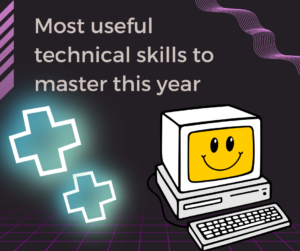
In the fast-changing world of technology, keeping ahead requires ongoing adaptation and learning. As we approach 2024, the land scape of technical skills continues to change, impacted by advances in artificial intelligence, data science, cloud computing, and other areas. But, with so many choices, what is the greatest technological skill or tool to focus on this year? 1. Generative AI: Beyond ChatGPT, Generative AI has advanced from a specialist interest to a crucial part of current technology. Tools like as ChatGPT have proved AI’s ability to generate human-like prose, but the applications go well beyond chatbots. Generative AI includes a wide range of tools for creating material, code, and even art. Key areas to focus on are: Natural Language Processing (NLP): Knowing how AI models process and create human language is critical. NLP skills may help with customer service automation, content generation, and even difficult data analysis. Generative Adversarial Networks (GANs): GANs are a type of AI in which two neural networks fight to create more realistic results. They are used for a variety of purposes, including deepfakes, picture quality enhancement, and creative media generation. AI Ethics: As strong generating tools emerge, there is an increasing need to comprehend their ethical implications. AI ethics knowledge will be essential for designing ethical and fair AI applications. 2. Cloud Computing, DevOps Cloud computing is a key component of current IT infrastructure, and expertise in this field is quite valued. Major cloud platforms like as AWS, Google Cloud Platform, and Microsoft Azure are increasing their capabilities, making it critical to stay current with their offers. Key areas to consider include: Cloud Architecture: Knowing how to create scalable and efficient cloud systems is critical. This requires understanding microservices, containerization (e.g., Docker), and serverless systems. DevOps Practices: DevOps combines development and operations to optimize the software delivery process. The skills of continuous integration/continuous deployment (CI/CD), automated testing, and infrastructure as code are in great demand. Cloud Security: As cloud use expands, so does the need to secure cloud settings. Skills in cloud security, compliance, and risk management are becoming increasingly relevant. 3. Data Science & Machine Learning Data science and machine learning (ML) remain at the forefront of technological innovation. The capacity to evaluate and comprehend data is extremely useful in today’s data-driven environment. Key areas to focus on are: Advanced ML Techniques: While fundamental machine learning abilities are required, understanding more advanced techniques such as reinforcement learning, neural network search, and transfer learning will help you stand out. Data Engineering: Knowing how to create and maintain data pipelines is essential for transforming raw data into useful insights. Skills in data warehousing, ETL procedures, and big data technologies (such as Apache Spark) are in great demand. Ethics and Fairness in ML: Machine learning, like generative AI, requires ethical issues. Skills in recognizing and minimizing prejudice, guaranteeing justice, and following ethical rules are becoming more crucial. 4. Cybersecurity With an increase in cyber threats, cybersecurity remains a major focus. As enterprises of all sizes confront growing challenges, competence in this area is more important than ever. Key areas to consider include: Threat Detection and Response: The ability to recognize, analyze, and respond to security problems is crucial. Understanding typical attack vectors, leveraging threat intelligence tools, and putting incident response procedures in place are all part of this process. Security Operations: Understanding security operations centers (SOCs) and technologies such as SIEM (Security Information and Event Management) may be critical for monitoring and managing security throughout a company. Ethical hacking: Understanding how to test and safeguard systems from the standpoint of an attacker might give useful information. Skills in penetration testing and vulnerability assessment are in great demand. 5. Blockchain and Web3 Technologies. Blockchain technology and the notion of Web3 symbolize the internet’s future development, emphasizing decentralized and trustless platforms. Skills in this area can lead to a variety of inventive applications: Smart Contracts: Knowing how to create and implement smart contracts on platforms like Ethereum might be useful. These contracts automate and enforce agreements with no middlemen. Decentralized Finance (Defi): Defi is revolutionizing the financial industry by allowing decentralized financial services. Skills in building and comprehending Defi protocols and applications are becoming increasingly important. Non-fungible tokens (NFTs) are rethinking ownership and digital art. Understanding the underlying technology and its applications can give valuable insights into this emerging industry. 6. Quantum Computing. While still in its early stages, quantum computing has the potential to change how we address complicated issues. Developing a fundamental grasp of quantum computing ideas and languages can put you ahead of the curve: Quantum Algorithms: Understanding quantum algorithms like Shor’s algorithm or Grover’s algorithm might be useful. These algorithms address challenges that traditional computers cannot solve. Quantum Programming Languages: Knowing languages like Qiskit (IBM) and Cirq (Google) can help you create and test quantum algorithms. Quantum encryption: Understanding how quantum computing affects encryption and creating quantum-resistant algorithms will become increasingly crucial. Choosing the Right Skill for You. When choosing a technology skill or tool to learn, consider the following factors: Career Goals: Match your study to your career objectives. If you want to work with data, consider a career in data science or machine learning. If cybersecurity interests you, pursue a career in it. sector Trends: Determine which talents are in demand in your sector. Examine job advertisements and industry reports to determine the most sought-after talents. Personal Interests: Select a skill that truly interests you. Passion and curiosity may motivate you to overcome obstacles and succeed in your chosen area. All of this provides direction. What seems to be a random approach is actually a method of providing you with the knowledge you need to steer yourself ahead in a way that is tailored to what you love and find fascinating, rather than what everyone else thinks you should do.
The Evolution of Smart Home security
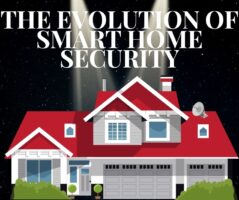
In an age where technology pervades every area of our lives, it’s no surprise that home security has evolved dramatically. Traditional locks and alarms are no longer used; instead, smart home security systems provide homeowners with previously inconceivable levels of protection and peace of mind. Let’s trip through the evolution of smart home security and see how it’s changing the way we protect our most valuable assets. The Rise of Smart Home Security The concept of smart home security arose from the intersection of two powerful forces: the Internet of Things (IoT) and advances in artificial intelligence (AI). By connecting sensors, cameras, and other smart gadgets to the internet, homeowners can now watch and control their houses remotely from anywhere in the globe. Key Features of Smart Home Security Systems Smart cameras The most important component of any smart home security system, is providing real-time video surveillance of your property. These cameras provide full monitoring against intruders by including capabilities like motion detection, night vision, and two-way voice communication. Smart doorbells are a modern take on the traditional doorbell, fitted with cameras, motion sensors, and intercom systems. They not only let you monitor and communicate with visitors remotely, but they also record important footage in the event of a break-in or parcel theft. Smart Doorbells Smart doorbells are a modern take on the traditional doorbell, fitted with cameras, motion sensors, and internet systems. In addition to providing you with remote monitoring and communication capabilities, they also capture crucial video footage that can be utilized in the event of a break-in or package theft. Smart Sensors which range from door/window sensors to motion detectors, serve an important role in detecting unwanted entry and generating alarms. When connected to a central hub or security system, these sensors can alert homes to potential dangers and initiate automated actions for safety. Smart Lock Say goodbye to fumbling for keys; smart locks allow you to lock and open your doors with your smartphone or your voice command. Smart locks provide increased security and make you more convenient through features such as virtual keys, access logs, and remote locking capabilities. Manufacturers and users were more conscious of the importance of safe and private smart home solutions.Robots are being developed for a variety of applications in the smart home, including cleaning, security, and entertainment. These robots can navigate and interact with their surroundings. A list of technologies that I believed were required in every home :Audio Video switches, and outletsComputer, internet, and phoneHeating & cooling SecuritySmoke detection, irrigation, and more. The Future Of Smart Home Security As technology advances, the future of smart home security appears brighter than ever. We should expect greater AI improvements, more seamless integration with other smart home devices, and improved interoperability across brands and ecosystems. Furthermore, the increasing frequency of smart cities and interconnected infrastructure will open up new chances for collaboration and innovation in the field of home security. Advantages of Smart Homes Smart homes provide several benefits to homeowners, including increased convenience, safety, efficiency, and overall quality of life. Here are several major advantages: Convenience: One of the main advantages of smart homes is the convenience they provide. With smart gadgets connected to a central system, homeowners may remotely manage numerous parts of their home environment via smartphone applications or voice commands. Smart homes simplify routine activities such as setting the thermostat, turning off lights, locking doors, and even starting appliances. Energy Efficiency: Smart home technology allows homeowners to optimize energy use and save on utility expenses. Smart thermostats, for example, may learn your heating and cooling preferences and automatically alter the temperature to save energy while you’re gone or sleeping. Similarly, smart lighting systems may be set to switch off lights in empty rooms or vary brightness levels in response to natural light, resulting in considerable long-term energy savings. Smart home security systems provide homeowners with more peace of mind by providing improved surveillance and monitoring capabilities. Smart cameras, doorbell cameras, and motion sensors enable you to keep an eye on your home in real time and receive immediate notifications in the event of unusual behavior. Furthermore, smart door locks allow for remote locking and unlocking, and features such as access logs give useful information about who enters and exits your property. Smart home technology may improve safety in a variety of ways, in addition to providing security. Smoke and carbon monoxide detectors can be linked to the smart home network to provide early warning of possible risks. In the case of an emergency, smart home technologies can immediately warn authorities and homeowners, reducing risks and ensuring a quick response. Customization and Personalization: Smart home technology allows homeowners to customize their living environments to fit their tastes and lifestyle. Whether it’s creating unique lighting settings, automating routines, or changing the atmosphere with smart speakers, the ability to tailor your home environment improves comfort and enjoyment. Remote Monitoring and Management: Smart home technology allows you to monitor and manage your house from anywhere, whether you’re at work, on vacation, or just gone. Remote access provides homeowners with additional control and flexibility over their living areas, whether they are at home or away. Integration and interoperability: Smart home gadgets are intended to operate together effortlessly, resulting in a unified ecosystem that improves functionality and interoperability. Homeowners may operate various smart devices with a single voice command or app thanks to integrations with platforms like Amazon Alexa, Google Assistant, and Apple HomeKit, simplifying the user experience and increasing convenience. The emergence of smart home security marks a fundamental shift in how we defend our houses. With smart devices, AI-powered analytics, and remote monitoring capabilities, homeowners may have more peace of mind knowing that their loved ones and assets are safe and secure. So, whether you’re a tech enthusiast wanting to embrace the latest technologies or just want to improve the safety of your house, the world of smart home security provides many options. After all, there’s no place like home, and
Best free online AI tools
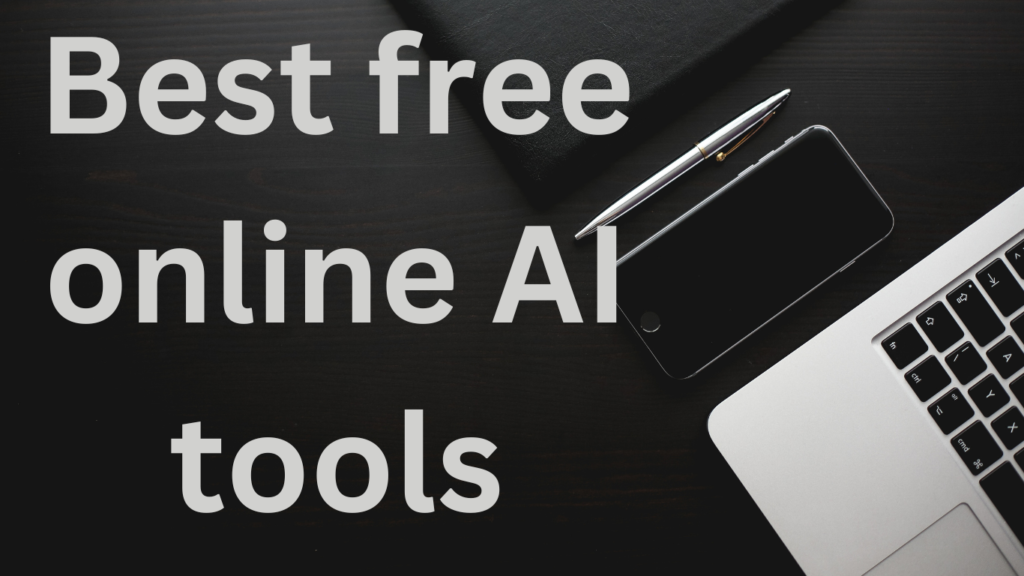
Artificial Intelligence (AI) is a disruptive force in the ever-changing technology landscape that is transforming businesses and spurring innovation. AI used to be the domain of large, well-funded companies, but as it has become more accessible, anyone may now use sophisticated tools, regardless of skill level or funding. We’ll go into the fascinating realm of free AI tools in this blog post and see how they’re transforming the way we work, create, and resolve issues. Democratization of Innovation The days of AI being limited to specialized researchers and engineers are long gone. These days, a wide range of free AI tools enable individuals, entrepreneurs, and businesses of all kinds to take advantage of AI’s promise in a variety of industries. Whether Exploring Free AI Tools Across Domains 1. Natural Language Processing (NLP): 2. Computer Vision: 3. Machine Learning: 4. Speech Recognition: 5. Chatbots and Conversational AI: 6. Data Analytics and Visualization:
Free AI tools for student
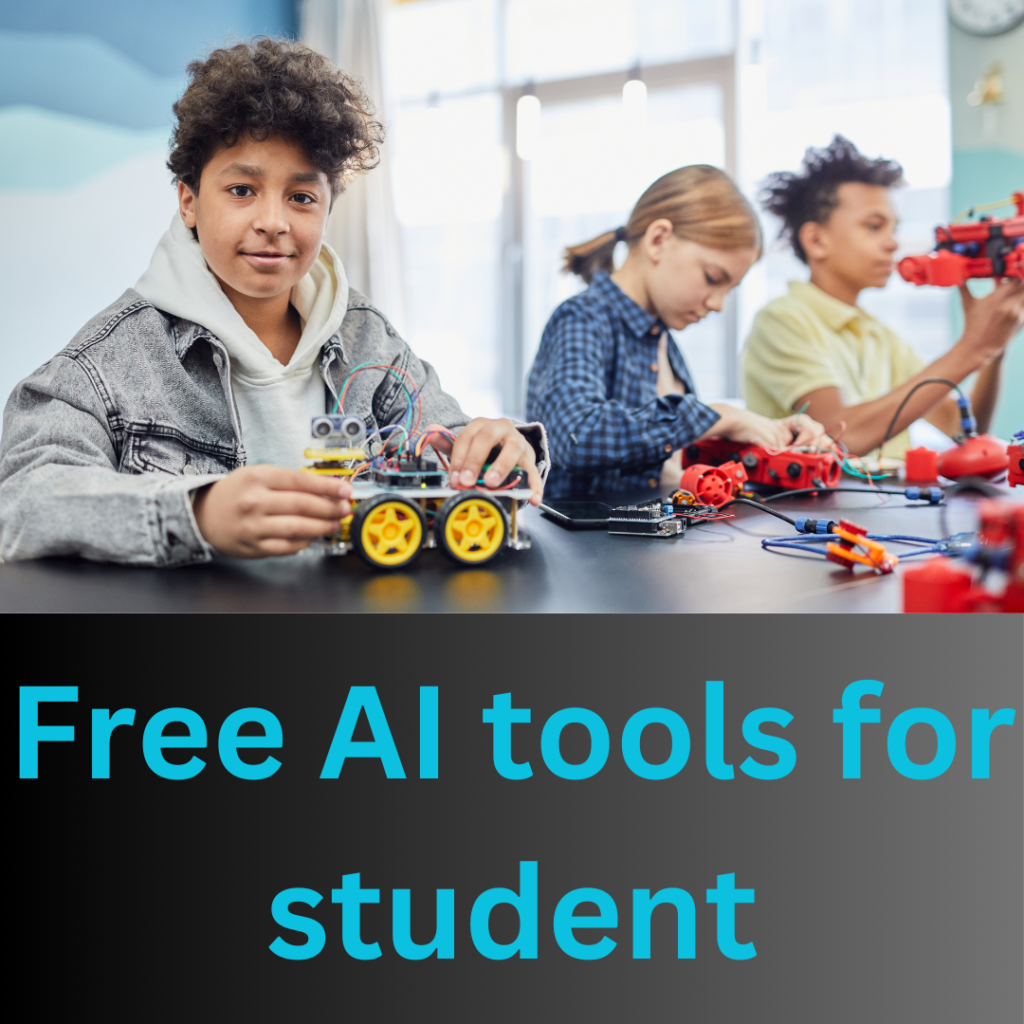
Introduction: In today’s digital age, the power of artificial intelligence (AI) is revolutionizing various industries and transforming the way we work, learn, and create. From simplifying tasks to enhancing decision-making processes, AI tools have become indispensable assets for individuals and businesses alike. Fortunately, many of these powerful AI tools are available online for free, making them accessible to anyone with an internet connection. In this blog post, we’ll explore some of the best free AI tools available online and how they can empower you to unleash your creativity and boost your productivity. 1.Google AI Experiments: Google’s AI Experiments platform is a playground for anyone interested in exploring AI’s creative possibilities. From interactive art to games and educational tools, Google AI Experiments showcase the innovative applications of AI in various domains. One standout example is “Quick, Draw!” – an AI-powered game where you sketch drawings, and the AI tries to guess what you’re drawing in real-time. It’s not only entertaining but also demonstrates the capabilities of machine learning algorithms in understanding human inputs. 2.IBM Watson Studio: IBM Watson Studio offers a comprehensive suite of tools for data scientists, application developers, and business analysts to collaborate and build AI-powered solutions. With its free tier, users can access features like Jupyter Notebooks, data visualization tools, and machine learning models. Whether you’re a beginner learning about data science or an experienced professional looking to streamline your workflow, IBM Watson Studio provides the resources you need to succeed. 3.OpenAI GPT-3 Playground: Open Ai’s GPT-3 is one of the most advanced language models, capable of generating human-like text based on the input it receives. The GPT-3 Playground allows users to interact with the model in real-time, providing prompts and observing the model’s responses. It’s a fascinating tool for generating creative writing, brainstorming ideas, or even building conversational interfaces. While access to the full GPT-3 model is restricted, the playground offers a glimpse into its capabilities and potential applications. 4.TensorFlow Playground: Developed by Google, TensorFlow is an open-source machine learning framework widely used for building neural networks and deep learning models. The TensorFlow Playground is a web-based interactive tool that enables users to experiment with neural networks without writing any code. With intuitive controls and visualizations, users can adjust parameters, add layers, and observe how changes affect the network’s behavior in real-time. It’s a fantastic resource for learning about neural networks and experimenting with different architectures. 5.Canva’s Design AI: Canva is a popular online graphic design platform known for its user-friendly interface and vast library of templates. With Canva’s Design AI, users can harness the power of AI to create stunning designs effortlessly. Whether you need to design social media graphics, presentations, or marketing materials, Canva’s AI suggests layout options, color schemes, and font combinations based on your preferences. It’s like having a virtual design assistant to help you bring your ideas to life. 6.Deep Dream Generator: Deep Dream Generator is a fascinating AI-powered tool that creates psychedelic images by enhancing and modifying existing photos using convolutional neural networks. Users can upload their images and choose from various visual styles and parameters to generate unique and surreal artworks. While it’s primarily used for artistic expression and experimentation, Deep Dream Generator showcases the creative potential of AI algorithms in transforming visual content. 7.Pix2Pix Image-to-Image Demo: Pix2Pix is a machine learning model capable of transforming images from one domain to another, such as turning sketches into realistic photos or converting day scenes into night scenes. The Image-to-Image Demo provides an interactive interface where users can input sketches or simple drawings and see them transformed into realistic images in real-time. It’s a fun and educational tool that demonstrates the power of generative adversarial networks (GANs) in image translation tasks. These are just a few examples of the many free AI tools available online, each offering unique capabilities and opportunities for exploration. Whether you’re interested in art, design, data science, or natural language processing, there’s an AI tool out there waiting for you to discover and unleash your creativity. As AI technology continues to advance, the possibilities for innovation and collaboration are limitless, and these free tools serve as gateways to a future where AI empowers individuals to achieve their full potential.
Health Technology in our life
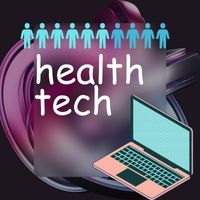
Health technology offers a myriad of benefits that profoundly impact individuals’ lives. “Empowering Wellness: The Impact of Wearable Health Tech on Everyday Life” Wearable health technology, including smartwatches, fitness trackers, and health monitoring devices, has transformed how individuals manage their health and wellness . These devices track various metrics such as heart rate, sleep quality, activity levels, and stress levels, providing users with valuable insights into their overall health. With features like activity reminders, goal setting, and personalized feedback, wearable devices motivate users to adopt healthier habits and lifestyles. The convenience of having health data readily available on a wristwatch or smartphone encourages users to stay proactive about their wellness, leading to improved physical fitness, better sleep, and reduced stress levels. “Navigating Health care: How can we use for Reshaping Patient Experiences” Digital innovations in healthcare, such as telehealth services, mobile health apps, and electronic health records, are revolutionizing the way patients access and interact with healthcare services. Telehealth allows patients to contact with healthcare providers remotely, reducing wait times and eliminating the need for travel. Mobile health apps empower patients to manage their health through features like appointment scheduling, medication reminders, and symptom tracking. Electronic health records streamline communication between healthcare providers and improve care coordination, resulting in better patient outcomes and experiences. “From Couch to Fit: The Role of Fitness Trackers in Active Lifestyles motivation” Fitness trackers have become indispensable tools for individuals looking to adopt healthier lifestyles and increase their physical activity levels. These devices monitor metrics such as steps taken, distance traveled, calories burned, and active minutes, providing users with real-time feedback on their exercise habits. With features like goal setting, progress tracking, and social sharing, fitness trackers motivate users to set and achieve fitness goals, leading to improved cardiovascular health, weight management, and overall well-being. “A Doctor in Your Pocket: Exploring the Convenience of Telehealth Services” Telehealth services bring the convenience of medical care directly to patients’ smartphones and computers, revolutionizing the healthcare experience. Patients can access various healthcare services remotely through video consultations, phone calls, and secure messaging, including primary care, specialty consultations, mental health counseling, and follow-up visits. Telehealth eliminates barriers to care such as distance, transportation, and time constraints, making healthcare more accessible and convenient for patients of all ages and backgrounds. “Sleep Smarter, Live Better: Harnessing Technology for Improved Sleep Health” Technology has become a valuable ally in promoting healthy sleep habits and improving sleep quality. Sleep tracking devices, smart mattresses, and sleep analysis apps monitor factors such as sleep duration, sleep stages, and sleep disturbances, providing users with insights into their sleep patterns. By identifying and addressing issues such as insomnia, sleep apnea, and restless leg syndrome, technology helps individuals achieve better sleep hygiene and overall sleep health, leading to improved cognitive function, mood regulation, and physical well-being. “Eating Well in the Digital Age: How Mobile Apps Are Revolutionizing Nutrition” Mobile apps are transforming the way individuals approach nutrition and dietary habits, empowering them to make healthier food choices and achieve their nutritional goals. Nutrition tracking apps, meal planning tools, and recipe databases provide users with information about calorie intake, macronutrient distribution, and nutrient density, helping them build balanced and nutritious meals. With features like barcode scanning, food logging, and personalized recommendations, these apps make it easier for users to adopt sustainable and healthy eating habits, leading to improved energy levels, weight management, and overall health. “Stress Less, Live More: Managing Mental Wellness with Health Tech Solutions” Health tech solutions offer innovative ways to manage stress and improve mental wellness in today’s fast-paced world. Mindfulness apps, meditation guides, and stress tracking devices help individuals cultivate mindfulness, relaxation, and resilience in the face of daily stressors. By practicing techniques such as deep breathing, guided meditation, and progressive muscle relaxation, users can reduce stress levels, improve mood, and enhance overall emotional well-being. Integrating mental wellness into daily routines with the help of technology fosters a holistic approach to health, promoting balance, harmony, and vitality. “Managing Chronic Conditions: The Rise of Remote Patient Monitoring Devices” Remote patient monitoring devices are revolutionizing the management of chronic health conditions, allowing individuals to monitor their symptoms and vital signs from the comfort of their homes. These devices, which include wearable sensors, home monitoring kits, and mobile health platforms, enable patients to track metrics such as blood pressure, blood glucose levels, and oxygen saturation in real-time. By providing healthcare providers with access to continuous and accurate data, remote patient monitoring improves care coordination, facilitates early intervention, and reduces the need for hospitalizations and emergency room visits among patients with chronic conditions. “Data-Driving Decisions: Health Analytics for Personal Care” Health analytics and big data are transforming healthcare delivery by enabling personalized and data-driven decision-making. By analyzing large volumes of health-related data, including electronic health records, genomic information, and wearable device data, healthcare providers can identify patterns, trends, and correlations that inform treatment decisions and interventions. Advanced analytics techniques such as machine learning and predictive modeling help predict patient outcomes, optimize treatment protocols, and tailor interventions to individual patient needs, resulting in improved clinical outcomes, reduced healthcare costs, and enhanced patient satisfaction. “Aging Gracing: Seniors’ Health and Independence Technologies” Assistive technologies play a critical role in promoting health and independence among older adults as they age. These technologies, which include smart home devices, wearable safety alarms, medication management systems, and remote monitoring solutions, help seniors maintain their autonomy and quality of life. Smart home devices automate household tasks and provide safety and security features, while wearable alarms offer peace of mind and immediate assistance in case of emergencies. Medication management systems ensure medication Overall, these advancements in health technology contribute to a healthier, happier, and more connected society.
Technology in the Digital World
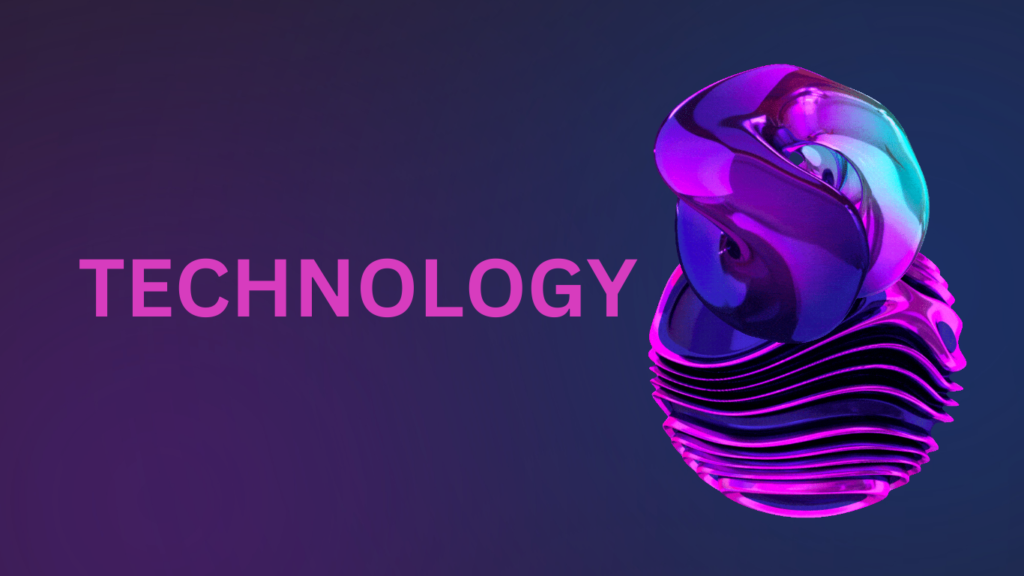
First of all, Technology affects every part of our lives in today’s fast-paced world, spurring efficiency, innovation, and connectivity. With the introduction of Artificial Intelligence (AI) and the widespread use of smartphones, the technological environment is continuously changing and changing both industries and communities. We’ll look at some of the major technology developments that are influencing our world now in this blog, from blockchain to artificial intelligence and cybersecurity. In today’s rapidly evolving world, technology continues to innovate and revolutionize every aspect of our lives. From cutting-edge advancements in artificial intelligence to pioneering developments in blockchain technology, the digital landscape is constantly evolving. These breakthroughs empower us to transform industries, disrupt traditional paradigms, and navigate new frontiers with unprecedented speed and efficiency. As we embrace the futuristic possibilities of technology, we unlock the power to optimize processes, streamline operations, and accelerate progress across the globe. With seamless integration and game-changing innovations, technology has become the driving force behind our collective journey towards a brighter, more connected future. Artificial Intelligence (AI): AI is still at the forefront of revolutionary development in a number of industries. Intelligent systems that automate jobs, customize user experiences, and improve processes are powered by machine learning algorithms. AI is changing the way we engage with technology and increasing the efficiency of daily chores. Examples of this include virtual assistants like Siri and Alexa as well as predictive analytics in the finance and healthcare industries. Businesses may use AI to improve efficiency, streamline processes, and provide customers with individualized experiences. Organizations can gain access to previously unattainable information, expedite procedures, and accelerate innovation by utilizing artificial intelligence. But as we traverse the nuanced ramifications of this revolutionary technology, moral considerations and prudent application are crucial. As AI develops further, it offers countless potential to influence how society develops in the future and ushers in a time when automation and intelligence combine to redefine what is possible for humans to do. Cybersecurity: As data and services become more digitally connected, cybersecurity is becoming a top priority. Cyberattacks are getting more complex and are aimed a t anything from vital infrastructure to personal devices. To protect sensitive data and reduce risks, businesses are consequently making significant investments in cybersecurity solutions including threat detection systems, multi-factor authentication, and encryption. 5G Connectivity: With faster speeds, reduced latency, and more capacity, the introduction of 5G networks is expected to bring in a new era of connectivity. The Internet of Things (IoT) will become more widespread with 5G, allowing smooth device connectivity and promoting the creation of self-driving cars, smart cities, and immersive experiences like virtual and augmented reality (VR and AR). Tools for Remote Work and Collaboration: Collaboration and remote work solutions have become increasingly popular as a result of the COVID-19 epidemic, revolutionizing both individual and corporate workplace operations. Project management software, cloud-based productivity tools, and video conferencing platforms have become essential for remote teams, facilitating smooth communication and cooperation across geographic bound Tools for Remote Work and Collaboration: For remote teams, cloud-based productivity tools, project management software, and video conferencing platforms have become essential for facilitating smooth communication and cooperation across geographic boundaries. Internet of Things (IoT): Another significant technological movement reshaping our modern environment is the Internet of Things (IoT). IoT devices are linked together over the internet, gathering and sharing data in real-time from industrial sensors and smart appliances to wearable fitness trackers and smart thermostats. Businesses and people may increase productivity, streamline procedures, and make well-informed decisions thanks to this abundance of data. Additionally, IoT is spurring innovation in a number of industries, including retail, transportation, healthcare, and agriculture. IoT sensors in agriculture allow farmers to optimize irrigation and fertilizer consumption by tracking crop health, weather, and soil moisture levels. IoT devices have the potential to improve patient outcomes and save healthcare costs by remotely monitoring patients’ vital signs and medication adherence. Conclusion: In conclusion, technology is driving innovation, connectedness, and efficiency across a variety of disciplines today, making it more dynamic and impactful than it has ever been. We are living through a digital revolution that is changing how we live, work, and interact. From the revolutionary potential of AI and blockchain to the critical need of cybersecurity and the promise of 5G connectivity, these technologies are changing our world. It’s critical that we accept technological breakthroughs responsibly as we navigate this quickly changing environment and make the most of their potential to solve problems, promote society, and create a better future for all.
